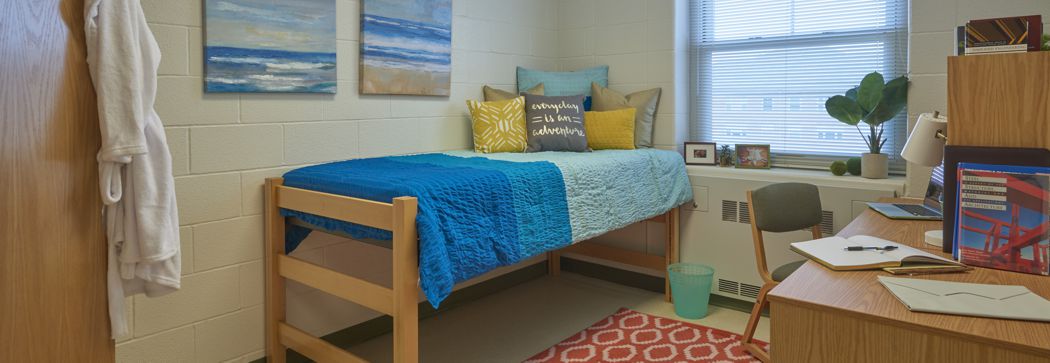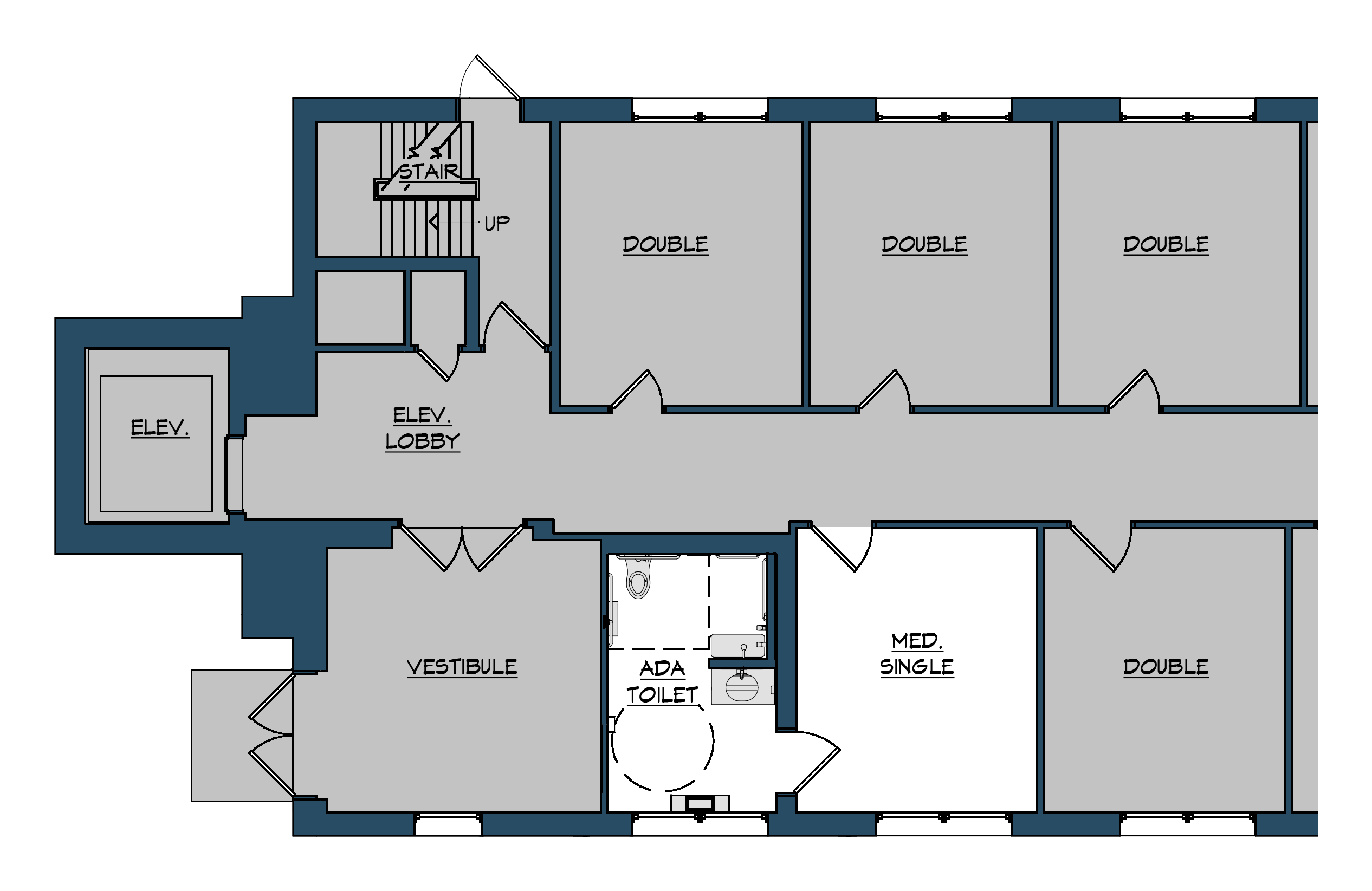Isolation Rooms in Residence Halls: Will They Be the New Norm?
July 9, 2020 Is now the time to introduce isolation rooms in campus residence halls? A single room with an en suite bathroom for students who require heightened privacy has become a programming “must” for new and renovated residence halls. Often referred to as “medical rooms,” they provide a private room and bathroom for students with medical needs. This includes conditions like Crohn’s Disease, diabetes, or other immunodeficiency disorders. More recently these rooms have been available at some institutions for students who are transitioning or exploring their identity development.
Is now the time to introduce isolation rooms in campus residence halls? A single room with an en suite bathroom for students who require heightened privacy has become a programming “must” for new and renovated residence halls. Often referred to as “medical rooms,” they provide a private room and bathroom for students with medical needs. This includes conditions like Crohn’s Disease, diabetes, or other immunodeficiency disorders. More recently these rooms have been available at some institutions for students who are transitioning or exploring their identity development.
Following the onset of COVID-19, our architectural team has been discussing if higher education institutions need to consider a similarly designed room for residence halls—an isolation room. This type of specialized space is commonly found in medical facility design, but isolation rooms are not typically included on college and university campuses. Could isolation rooms be one of the long-term changes we see?
The Benefits of Isolation Rooms in Campus Residence Halls
Isolation room design is very similar to a medical room—a single room with an en suite bathroom. The difference is isolation rooms are unassigned and students only utilize them when they are sick. The thought is that these rooms would not only be useful during a rare global pandemic, but also when a student gets sick and is contagious due to common illnesses. Students could temporarily relocate to the isolation room to help keep their roommates and classmates healthy while they recover.
While there is a cost associated with a room designed to (hopefully) remain empty, the wellness benefits and peace of mind could make the program investment worthwhile.
This type of proactive measure is helpful for students lacking ready alternatives to avoid contact with fellow students when they are ill. This could be due to distance for foreign students, but also the result of a lack of resources. As so much of the current national dialogue has revealed, the impacts are most significant for those at the lowest socio-economic class, with many students having nowhere to go when their college shuts down.
Residence Hall Realities
The greatest challenge to introducing isolation rooms for campus residence halls is the cost implications of designating a certain number of rooms to serve this function, recognizing they will be unused a great deal of the time. By the mid-2000s, 24-hour infirmaries had already become a thing of the past for most campuses due to cost implications, as well as added liabilities associated with provision of care.
Isolation rooms are likely to face a similar uphill battle. The biggest question may be how to determine an appropriate scale that does not create undue financial hardship or liability. Conversely, it must have appropriate capacity for typical infectious illnesses like strep throat or the common flu, or the near-term urgency for the post phases of pandemic quarantine.

Design Considerations for Residence Hall Isolation Rooms
In the medical world, the specialized HVAC needs for an isolation room are different than the “medical rooms” we see in residence halls. Perhaps that should change. We can use air pressure to minimize the transfer of airborne viruses (such as flu strains) from rooms with infected students into common corridor spaces. To create a “negative pressure”, the mechanical system pulls air into the room and then filters it before ducting it outside.
The bathroom design for a residence hall isolation room should allow for easy cleaning and minimize contamination risk. Example of design considerations include impervious surfaces, automated faucets and soap dispensers, and paper towels in lieu of blow dryers. If possible, design the bathroom with access to the hallway as well. This allows use as an additional private bathroom for all residents when there isn’t a student in the isolation room.
Other Considerations for Isolation Rooms in Student Housing
Before introducing isolation rooms on campus, your team will need to define its approach and consider various implications for students. Anticipated discussion topics include:
- How to handle food delivery to students in isolation. Will you utilize on-campus services or outside food service vendors, such as Uber Eats or GrubHub?
- Must students remain completely isolated or are there exceptions for different types of illnesses?
- What are the parameters to move students into isolation or release them back to their typical rooms?
- Protocols and procedures for cleaning during and after a student’s stay need to be thoughtful and thorough.
A single isolation room in a residence hall will not meet the demand of a highly contagious disease such as COVID-19. We have been forced to think bigger and our decisions have dramatically impacted students’ lives. Unfortunately, isolation wings or entire buildings devoted to self-quarantining are a “now normal”. How can we learn from the current situation and create healthier campus environments moving forward? Start one room at a time.
Carson Parr, AIA, LEED AP BD+C, leads our higher education design group. A partner in the firm, he holds a Master of Architecture – Community and Urban Design from The Pennsylvania State University. Carson is a Past President of the Central Pennsylvania Chapter of the American Institute of Architects (AIA). He also serves as a Student Mentor for Penn State. With a passion for design and planning, Carson works closely with clients to deliver inspiring, functional and sustainable campus spaces.